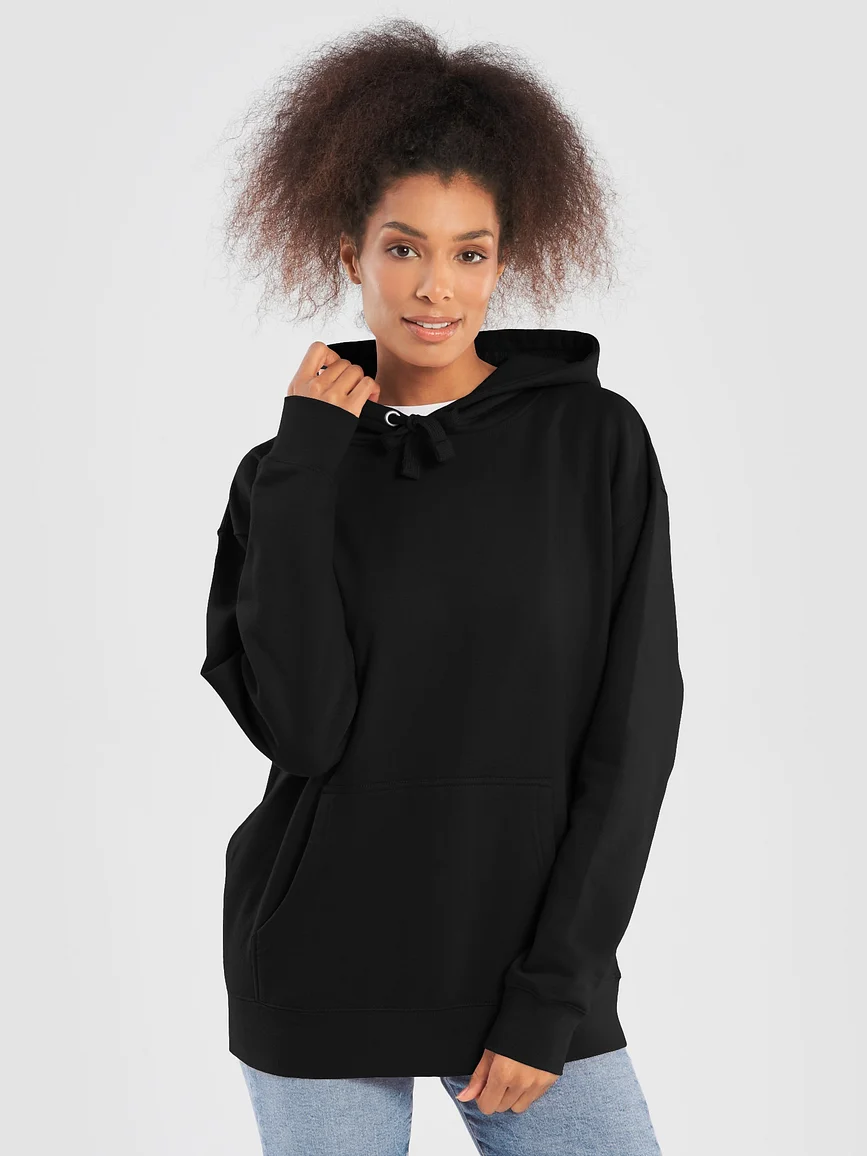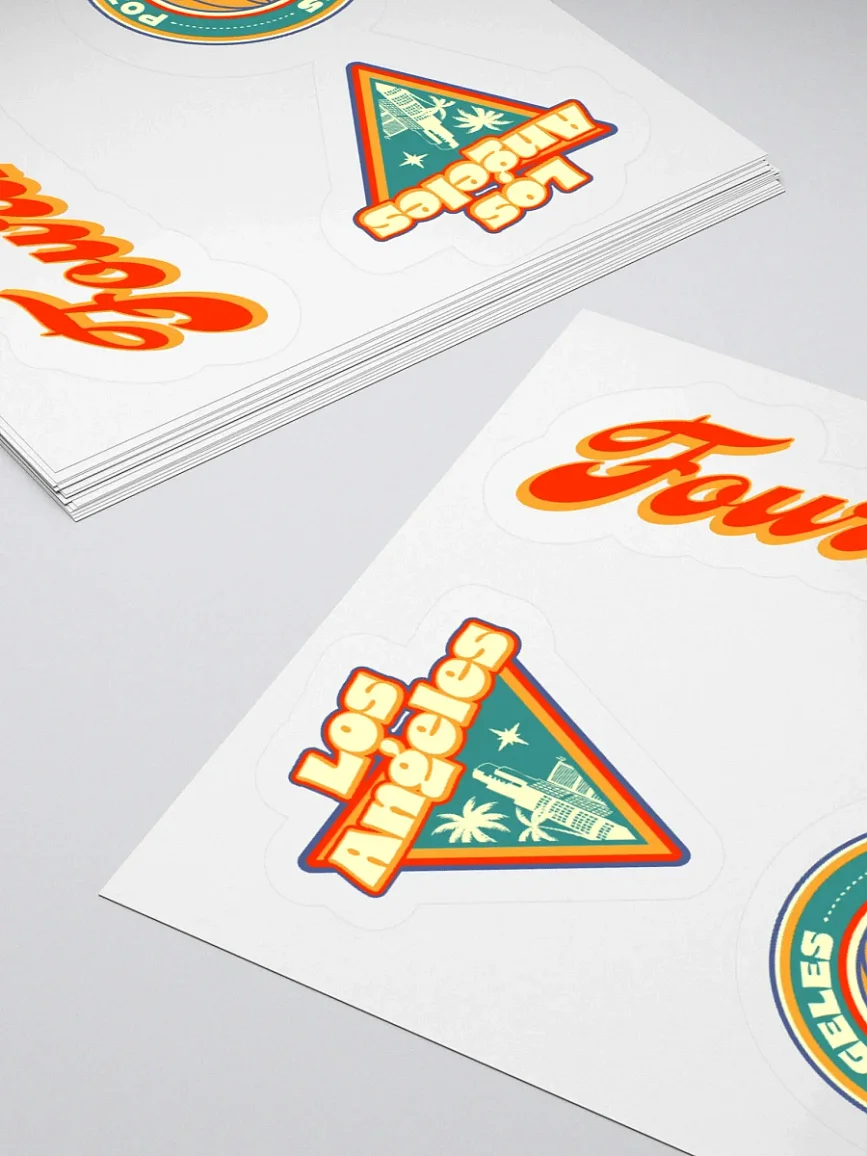Youtube Marketing: Proven Strategies for More Views
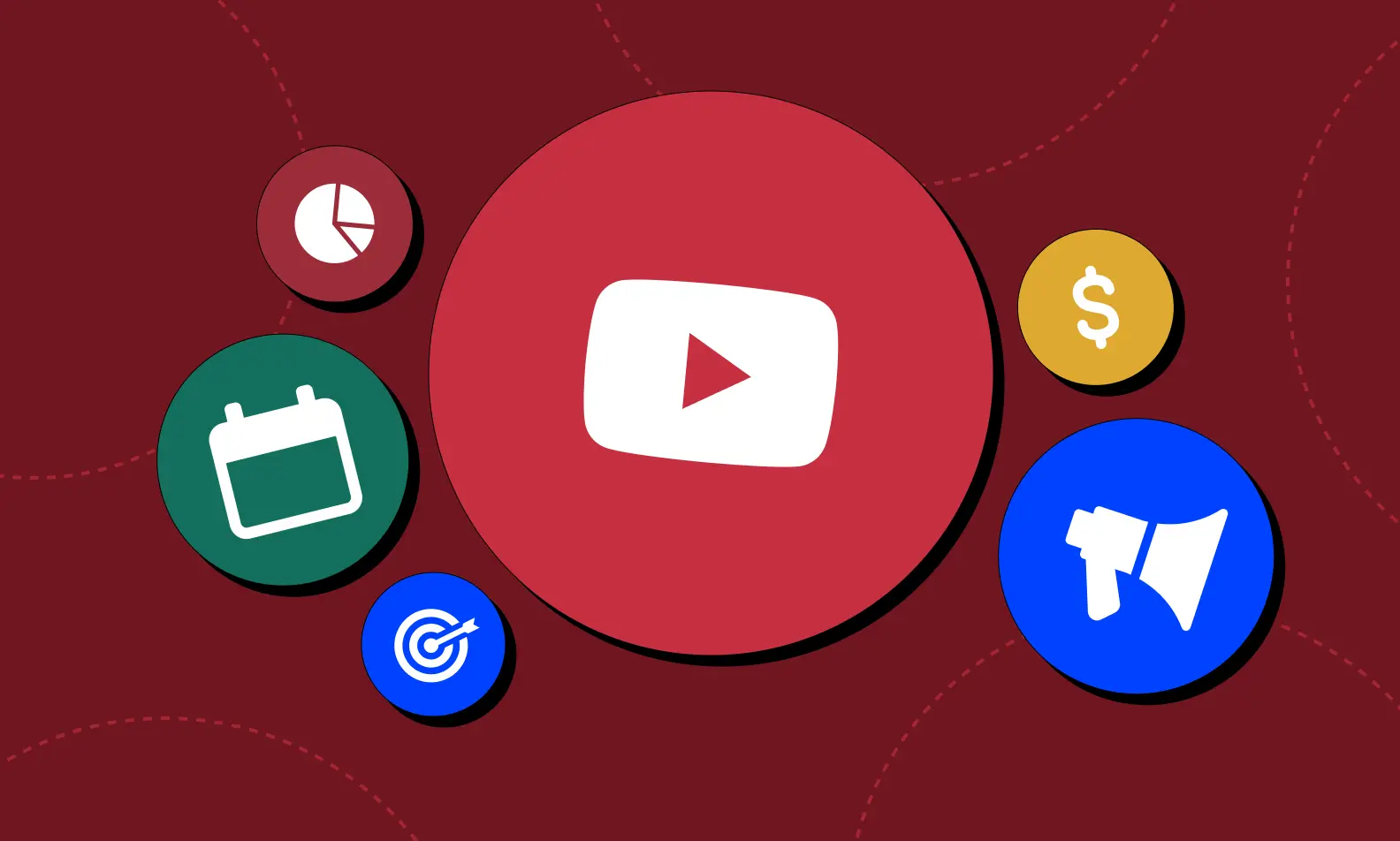
Are you a creator struggling to get your YouTube channel the attention it deserves?
For most new YouTubers, gaining visibility and growing an audience can be pretty challenging without a solid content marketing strategy in place.
YouTube marketing allows brands and creators to increase their brand awareness by delivering compelling and shareable video content that resonates with target audiences. Through consistent uploads, strategic use of SEO, and cross-promotion on social media, creators can reach a broader audience and enhance their visibility.
Whether you're aiming to promote a business, increase your subscriber count, or monetize your YouTube channel, this guide will provide you with a comprehensive roadmap to help you achieve the success you need to accelerate your channel's growth.
Why YouTube Marketing is Essential in 2024
In 2024, YouTube remains a cornerstone for marketers, providing a powerful combination of massive reach and highly engaging video content. As one of the most visited websites and the second-largest search engine, YouTube's potential for brand visibility is unparalleled.
In fact, 70% of what people watch on YouTube is determined by the platform’s recommendation algorithm, making optimization key for increased exposure. Additionally, video content remains highly engaging, with 87% of marketers reporting that video has been effective for generating leads and boosting brand awareness, highlighting YouTube’s continued dominance in digital marketing strategies.
Furthermore, a well-optimized YouTube channel can significantly enhance SEO efforts, ensuring your videos appear not just on the platform but also in search engine results, expanding your reach beyond YouTube itself.
Benefits of YouTube Marketing
Massive Reach and Search Visibility
With 2.5 billion monthly users, YouTube provides businesses access to a global audience, making it a critical platform for expanding brand awareness.
As the second most-used search engine after Google, YouTube videos can appear in search results, increasing your brand’s visibility when potential customers search for related terms.
A well-planned YouTube marketing strategy that includes optimizing your YouTube channel and videos for SEO can ensure your content is highly discoverable by both YouTube and Google search algorithms.
Engaging Visual Content Builds Trust
YouTube's visual-first nature allows businesses to connect with their audience on a deeper level.
Whether you're showcasing a product through tutorials, offering behind-the-scenes glimpses, or running a targeted ad campaign, video content creates an emotional connection that text or static images cannot achieve.
Video storytelling helps build trust and loyalty, making it one of the most effective forms of digital marketing.
Versatile Business Applications
Whether you're an ecommerce business, a personal brand, or a B2B company, YouTube marketing can be tailored to suit your needs.
Long-form content provides an opportunity to educate your audience, while YouTube Shorts and ads can capture attention quickly.
By utilizing tools like video ads and collaborations with YouTube creators or influencers, brands can diversify their marketing strategies. This versatility allows companies to attract different types of viewers and potential customers.
SEO and YouTube’s Algorithm
One of the key advantages of YouTube marketing is its SEO potential. YouTube videos, when properly optimized with relevant keywords, tags, and descriptions, can rank on both YouTube and Google search engines.
This makes YouTube an essential platform for businesses looking to increase their online visibility. Additionally, understanding YouTube’s algorithm and optimizing videos accordingly ensures that your content is delivered to users actively searching for related products or services.
A strong SEO strategy on YouTube leads to better search visibility, more organic traffic, and increased chances of conversions.
Data-Driven Insights and Monetization Opportunities
YouTube’s native analytics tool offers valuable insights into video performance, audience engagement, and revenue metrics.
Marketers can use this data to make informed decisions, continuously improving their strategies. Moreover, monetization opportunities on YouTube allow creators and brands to generate revenue through ads, sponsored content, and affiliate marketing, making YouTube not only a platform for engagement but also a profitable revenue stream.
How to Develop a YouTube Marketing Strategy
A well-planned YouTube marketing strategy is crucial for achieving long-term success. Follow these steps to create a solid strategy that will help you grow your YouTube channel:
Step 1: Define Clear Goals
The foundation of any successful YouTube Marketing strategy is setting specific, measurable goals for your marketing efforts. This can be critical to maintaining focus and evaluating your YouTube channel's success.
Your goals may vary depending on your business model but could include increasing brand awareness, driving traffic to your website, boosting subscriber numbers, or converting views into sales.
Each goal should be aligned with your broader marketing objectives. For example, if you aim to increase website clicks, your videos should include clear calls to action and links within your video description.
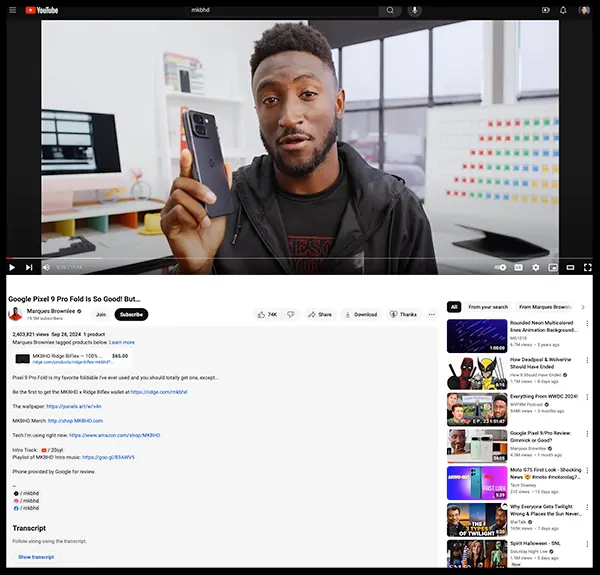
Take a look at Marques Brownlee aka MKBHD for instance.
The popular tech guru always posts links to the products he reviews in his YouTube video's description box along with links to his personal merch store and Amazon shop. This helps Brownlee monetize his content by driving traffic to his affiliate links and personal brand, while also providing value to his audience.
Defining these goals upfront allows you to create content that directly serves your business outcomes, and tracking metrics like subscriber growth or engagement rates helps you measure progress.
Step 2: Identify Your Target Audience

One of the most important things to consider when laying out your marketing strategy is identifying who you're making your videos for?
Research demographics like age, gender, location, and what types of videos they already consume on YouTube. Ask yourself, what kind of video content can you make that not only resonates with your brand but will grab the attention of a massive audience?
If you have a specific niche you want to focus on like tech, beauty, comedy, or gaming, consider catering your YouTube channel specifically to videos that will grab those audience's attention.
Utilize tools such as YouTube Analytics to gain insights into your current audience, or if you are starting fresh, look at competitor channels in your niche to understand what resonates with viewers.
Audience research will help guide the content creation process, ensuring that the videos you produce are relevant and engaging.
Step 3: Develop a Content Strategy
Once you’ve identified your audience and business goals, it’s time to develop a detailed content plan that aligns with both. A well-organized content strategy helps maintain consistency, ensuring that your uploads are regular and relevant.
Start by brainstorming a variety of YouTube video ideas, such as educational tutorials, how-to guides, product reviews, and demonstrations. These types of videos can establish your brand as an authority in your niche, while behind-the-scenes footage, Q&A sessions, and customer testimonials build trust and authenticity with viewers.
Keep an eye on trends like YouTube Shorts, which can drive engagement through quick, digestible content. The key is to balance promotional content with value-driven videos, providing content that both entertains and educates your audience.
A comprehensive content plan will help you stay focused, maintain a steady production schedule, and adapt to changing viewer preferences, ultimately helping you grow your channel and meet your business objectives.
Step 4: Set a Posting Schedule
Consistency in uploading videos is crucial for keeping your audience engaged and building a loyal subscriber base.
Developing a realistic content calendar, whether for weekly, bi-weekly, or monthly uploads, ensures that you maintain a steady flow of content, which keeps viewers coming back for more.
Regular uploads help build trust with your audience, as they’ll know when to expect new videos, and it also signals to YouTube’s algorithm that your channel is active, potentially improving your rankings in search results and recommendations.
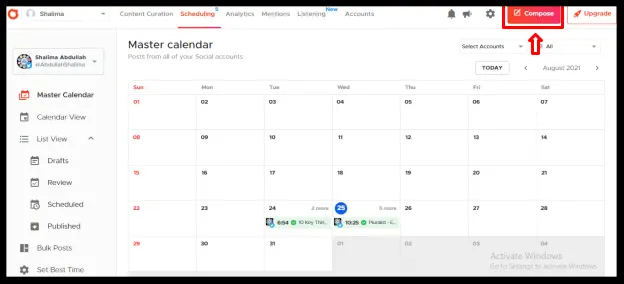
Using a social media management tools like Crowdfire or Buffer can streamline the planning process by allowing you to organize and schedule your video ideas, set deadlines, and track progress.
These platforms help ensure that you stick to your posting schedule, maintain consistency, and manage your content pipeline more efficiently.
Step 5: Optimize Videos for SEO
YouTube operates as a search engine, so optimizing your videos for SEO is vital for increasing visibility.
Start by conducting keyword research to understand what terms your target audience is searching for. Use these keywords in your video titles, descriptions, and tags to help YouTube index your content correctly.
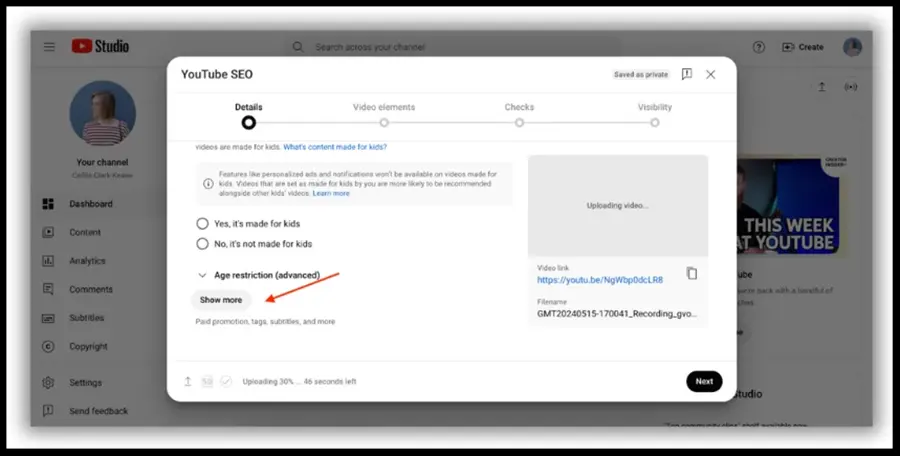
Write compelling titles that clearly describe your video’s content and include a primary keyword within the first 60 characters. Your video's description should not only summarize the video but naturally incorporate relevant keywords while including links to your website or other videos.
Creating custom thumbnails are also essential for capturing attention and improving your video’s click-through rate, as they provide a visually appealing preview of your content that entices viewers to click. Thumbnails should be clear, engaging, and represent the video accurately to avoid misleading viewers.
Additionally, adding closed captions not only makes your content more accessible to a wider audience, including those with hearing impairments or non-native speakers, but it also enhances your SEO. Captions allow YouTube’s algorithm to better understand the context of your video, potentially boosting your rankings in search results and making your content more discoverable.
Step 6: Promote Your Videos
Producing high-quality content is only half the battle—promotion is equally important to ensure your YouTube videos reach the right audience.
Share your content across social media platforms such as Facebook, Instagram, and TikTok to maximize exposure. Each platform offers unique ways to engage with different segments of your audience.
For instance, YouTuber and commentator Philip DeFranco utilizes his other social media platforms like Instagram to share clips of his YouTube videos. These clips, which DeFranco shares in his posts and Stories, highlight major news stories that within his videos that he feels will grab his audience's attention.
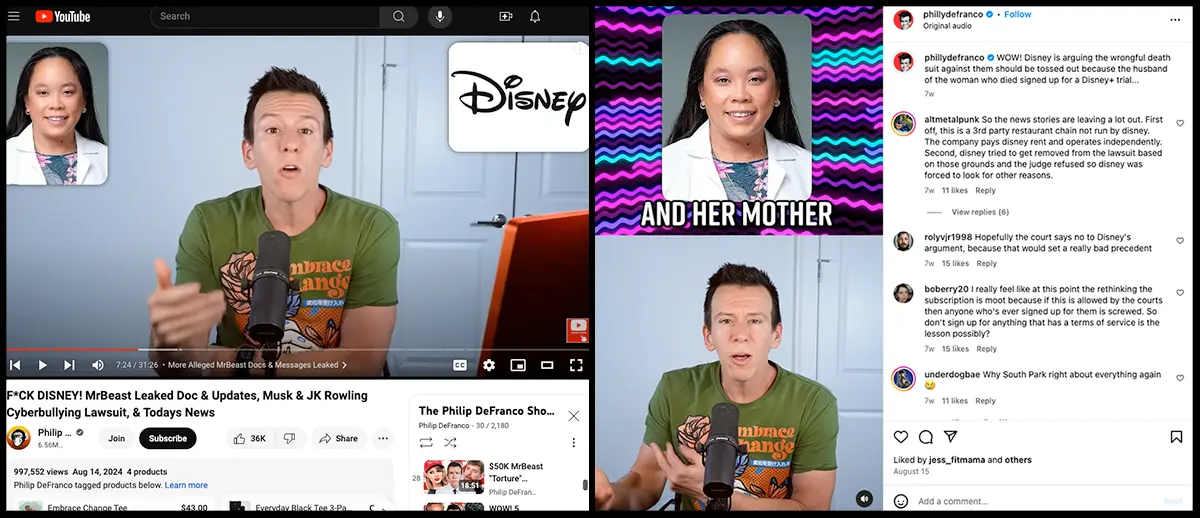
In addition to organic promotion, investing in YouTube ads can be a highly effective way to target specific demographics and boost engagement on your channel. YouTube offers several ad formats that can help you reach your desired audience, each with unique benefits.
For example, Trueview ads allow viewers to skip the ad after five seconds, meaning you only pay when viewers watch at least 30 seconds or interact with your video. This cost-effective model ensures you're only paying for engaged viewers. TrueView ads are great for building brand awareness or promoting specific videos to a targeted audience, such as users interested in your industry or niche.
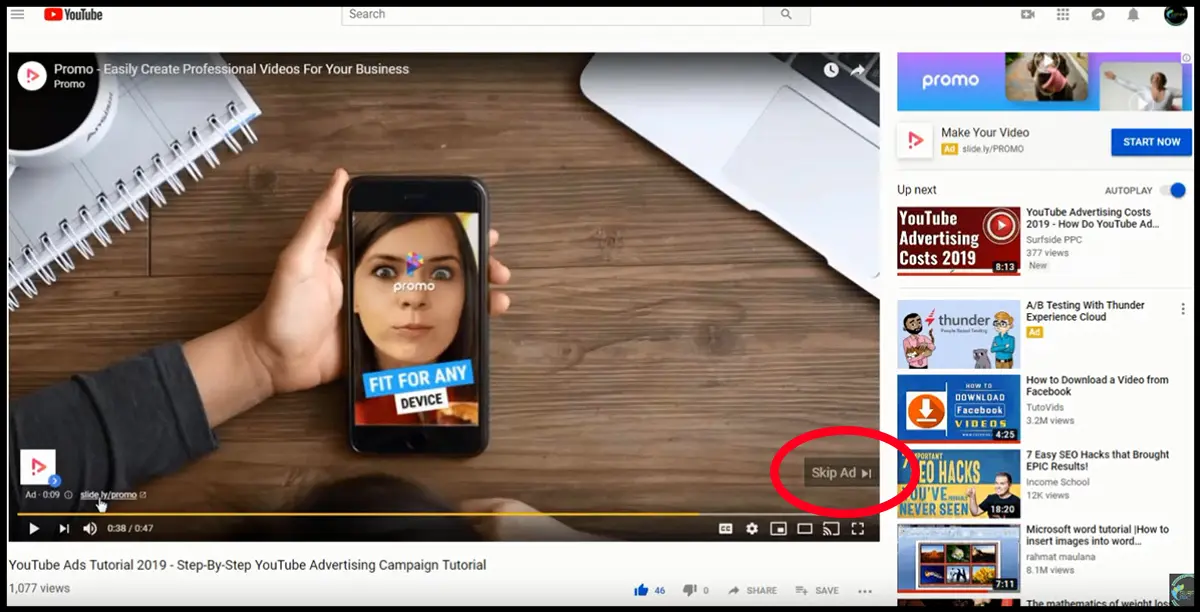
Non-skippable ads, on the other hand, can run for up to 15 seconds and guarantee that your entire message is viewed, making them ideal for concise, impactful messaging. These ads work well when you want to introduce your brand to new viewers or deliver a specific call to action, such as visiting your website or subscribing to your channel.
For more immersive promotion, bumper ads (six-second non-skippable videos) are perfect for reinforcing brand messaging or complementing larger marketing campaigns. These ads work well for creating quick, memorable impressions.
Step 7: Engage with Your Audience
Building a thriving community around your YouTube channel requires consistent and active engagement with your viewers. This is more than just responding to comments—it’s about creating meaningful interactions that encourage viewers to feel connected to your content and invested in your channel’s success.
Responding to comments is a simple but effective way to engage, showing viewers that you value their opinions and are open to feedback. By replying to questions, thanking viewers for their insights, and participating in discussions, you create a sense of community and encourage others to engage as well.
This level of interaction also signals to YouTube’s algorithm that your content is valuable and relevant, which can improve your rankings in search results and recommendations.
Beyond comments, you can engage your audience through live streams, polls, and community posts. Live streams offer real-time interaction, allowing for Q&A sessions, product demos, and casual chats, adding a personal touch to your content.
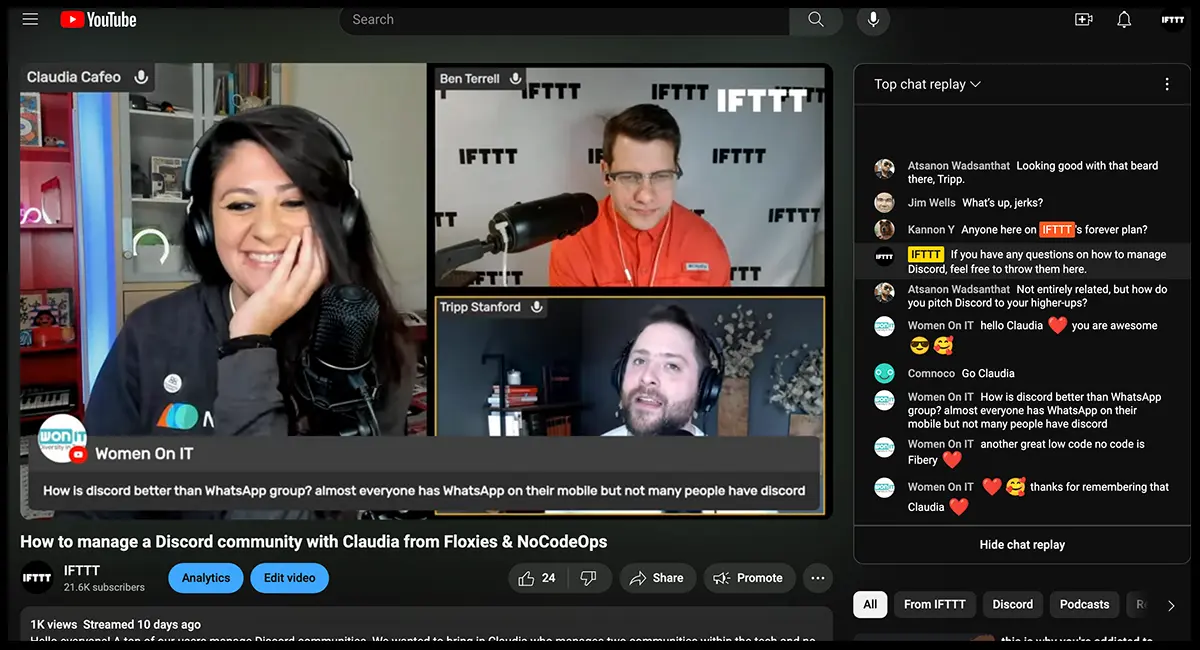
Polls and community posts help keep your audience engaged between uploads, allowing you to gather feedback, share updates, and gain insights into what viewers want to see next. These tools can help strengthen audience relationships and tailor future content to their preferences.
Step 8: Track Key Metrics
Finally, regularly monitoring your video's performance using YouTube Analytics is crucial for refining your content strategy and ensuring continued growth.
Monitoring metrics such as watch time, click through rates (CTR), and audience retention allows you to optimize underperforming content, test new ideas, and replicate the success of your most popular videos, ultimately leading to better audience engagement and channel growth.
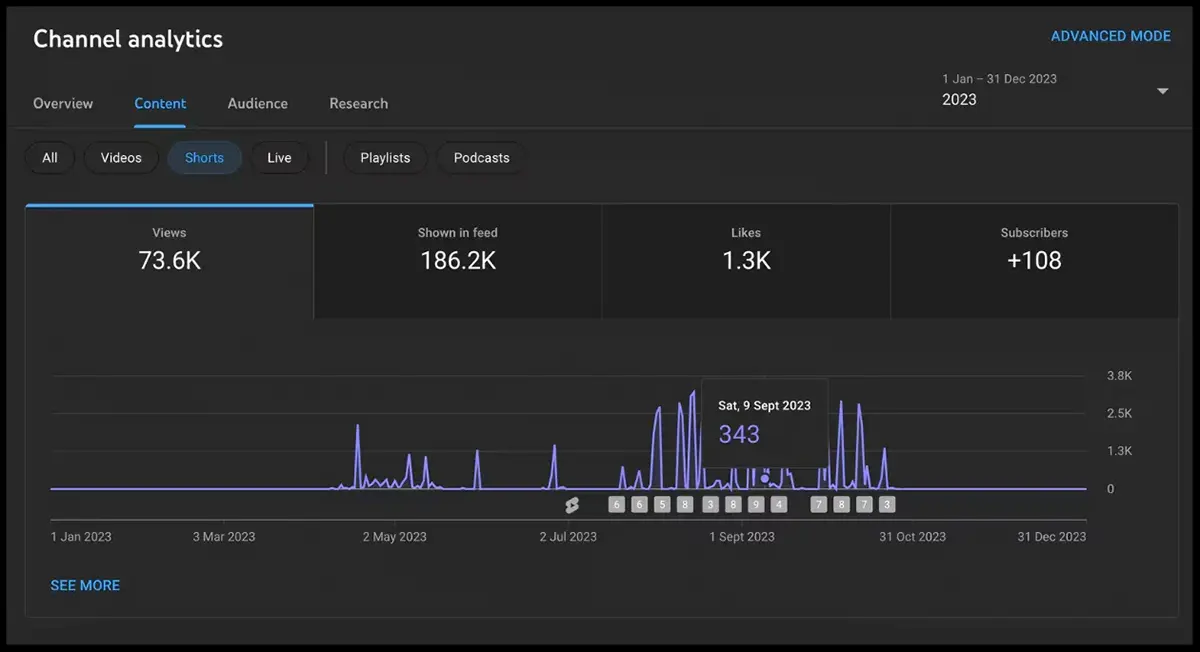
Watch time is especially important because YouTube’s algorithm favors content that keeps viewers on the platform longer, boosting visibility in search and recommendations. CTR shows how enticing your thumbnails and titles are, while audience retention highlights how well your video maintains viewers' attention.
By identifying which videos receive the most views, likes, and comments, you can determine what resonates with your audience and adjust your strategy accordingly.
Optimizing Your YouTube Channel for Success
An optimized YouTube channel is essential for maximizing your marketing strategy’s impact. Follow these steps to ensure your channel stands out and attracts viewers:
- Channel Branding: Use professional banners, logos, and a consistent color scheme to create a visually appealing YouTube channel that aligns with your brand. A well-branded channel encourages viewers to subscribe and engage with your content.
- Create a Channel Trailer: A channel trailer is a short video that introduces your brand to new viewers. Highlight what your channel offers and why viewers should subscribe.
- Optimize Video Titles and Descriptions: Include relevant keywords in your video titles and descriptions to improve SEO. This will help your videos appear in YouTube searches and attract more viewers.
- Organize Playlists: Create playlists to group related videos together. This helps keep viewers on your channel longer and increases overall watch time.
Creating Engaging YouTube Content That Drives Results
Content is king on YouTube, and the type of video content you create can make or break your success. Here are four types of high-performing content that drive results:
- Tutorials and How-Tos: These educational videos teach viewers how to solve a problem or use your product. They are great for building trust and positioning your brand as a helpful resource.
- Product Reviews and Demos: In-depth product reviews showcase the benefits of your products while driving purchases.
- Behind-the-Scenes Videos: Offer a glimpse into the inner workings of your business to create a personal connection with your audience.
- User-Generated Content (UGC): Encourage viewers to create content featuring your products and share it on their own channels. UGC builds social proof and can be repurposed on your channel.
YouTube SEO: How to Optimize Your Videos for Search
SEO plays a critical role in getting your YouTube videos discovered by new audiences. Here’s how to optimize your videos for better visibility:
- Keyword Research: Use YouTube’s search bar, Google Trends, and tools like TubeBuddy to find the keywords your audience is searching for.
- Optimize Titles and Descriptions: Include your target keywords naturally in your video titles and descriptions to boost search rankings.
- Tags and Hashtags: Add relevant tags and hashtags to your videos to increase discoverability and categorize them properly.
- Custom Thumbnails: Eye-catching thumbnails help improve your video’s click-through rate (CTR). Make sure your thumbnails are high-quality and represent the video’s content accurately.
YouTube Ads: A Comprehensive Guide to Maximizing ROI
YouTube ads offer a powerful way to promote your videos and channel. Here are the main types of ads you can use:
- Skippable In-Stream Ads: These ads can be skipped after 5 seconds and are a great way to raise awareness without annoying your audience.
- Non-Skippable Ads: These ads run for up to 15 seconds and are ideal for brand awareness campaigns.
- Discovery Ads: Appear in YouTube search results and on the homepage, driving traffic to your channel or videos.
- Bumper Ads: Short, 6-second non-skippable ads that are great for quick brand recall.
- Remarketing with YouTube Ads: Retarget users who have interacted with your channel, increasing the likelihood of conversion.
Promoting Your YouTube Videos for Maximum Reach
Maximizing the reach of your YouTube content is essential for growing your channel. Here are five strategies to promote your videos:
- Leverage Social Media: Share your videos across platforms like Facebook, Twitter, and Instagram to drive traffic back to your channel.
- Collaborate with Influencers: Partner with YouTubers or influencers in your niche to expand your audience reach.
- Run YouTube Ads: Promote your most successful content with targeted ads.
- Cross-Promote on Your Website and Blog: Embed videos in blog posts or on your website for additional views.
- Email Marketing: Include links to your latest videos in email newsletters to increase engagement from your existing subscribers.
How to Analyze and Optimize Your YouTube Marketing Performance
Tracking performance is essential to refining your marketing strategy. Use YouTube Analytics to track the following metrics:
- Watch Time and Audience Retention: These metrics show how long viewers stay engaged with your content.
- CTR and Thumbnails: Test different thumbnails and titles to see what improves your click-through rate.
- Audience Demographics: Use this data to understand who your viewers are and tailor your content accordingly.
- A/B Testing: Continuously experiment with video formats, titles, and ad strategies to optimize for better results.
Start Boosting Your YouTube Revenue with Fourthwall
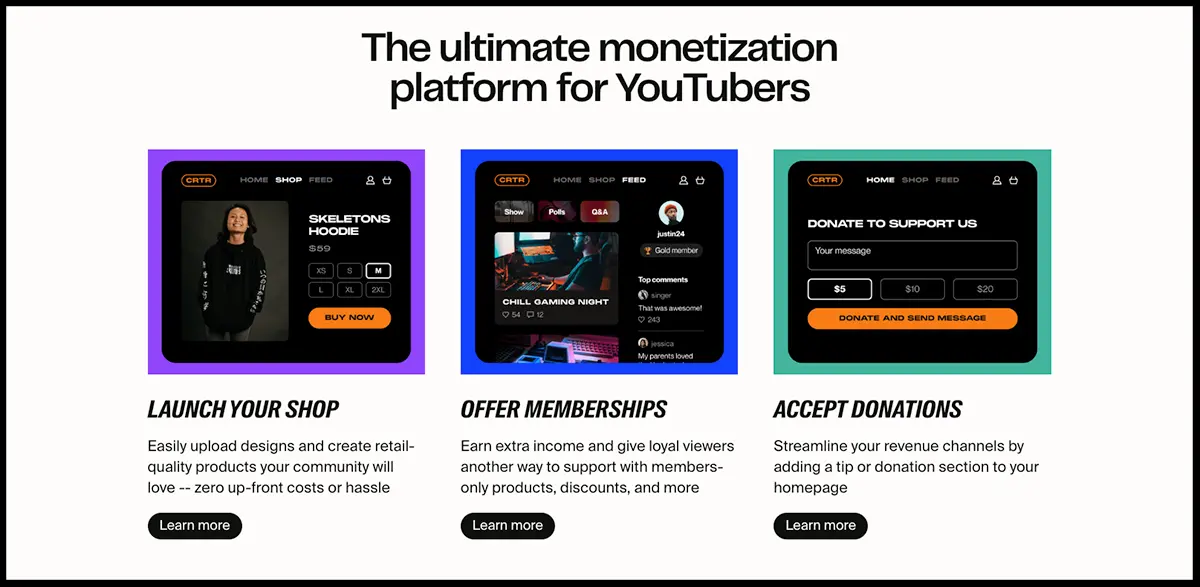
Want to start making money off your YouTube channel? Then up your marketing strategy with Fourthwall!
Fourthwall is an all-in-one comprehensive ecommerce platform tailored for creators. You can design and sell custom branded merchandise like t-shirts, mugs, and more, by integrating your Fourthwall store with YouTube Product Shelf.
This feature allows your viewers to browse and purchase your merch directly under your videos, without ever leaving the platform.
Fourthwall also lets you offer membership programs to your most loyal subscribers, giving them access to exclusive content, members-only products, discounts, and other special perks.
You can even accept tips or donations from your YouTube followers, making it easier to streamline your revenue while letting your fans support your content in a more personal and direct way.
Sign up with Fourthwall today and start improving your YouTube marketing strategy with exclusive tools designed to help you monetize your channel effortlessly.
Frequently Asked Questions
How Long Should My YouTube Videos Be?
The ideal video length on YouTube varies depending on the content and audience expectations. Tutorials and how-to videos benefit from being between 8 to 12 minutes because this length allows enough time to thoroughly explain a concept without overwhelming viewers.
On the other hand, vlogs, product reviews, and entertainment content are often more effective when they are 5 to 10 minutes long, keeping the content engaging and concise. Regardless of the video type, the key is to maintain viewers' attention while delivering valuable content.
How Much Does YouTube Advertising Cost?
YouTube advertising costs are influenced by various factors, such as the ad format, audience targeting, and competition within your niche. For in-stream ads, which can be skipped after five seconds, the cost typically ranges from $0.10 to $0.30 per view, meaning you only pay when a viewer watches at least 30 seconds or interacts with the ad.
Other formats, like non-skippable ads or bumper ads, may have different pricing structures based on impressions or the length of the ad. Additionally, more refined targeting, such as reaching specific demographics, interests, or locations, may increase the cost but result in a more engaged audience and higher conversion rates.
How Can I Gain More Subscribers?
To gain more subscribers on YouTube, focus on consistently delivering high-value, engaging content that resonates with your target audience. Use clear calls-to-action within your videos, encouraging viewers to subscribe for more content like what they’ve just watched.
Additionally, optimize your video titles, descriptions, and thumbnails to improve discoverability and increase click-through rates. Promoting your videos across social media platforms, email newsletters, and your website will further extend your reach, driving traffic from multiple sources.






